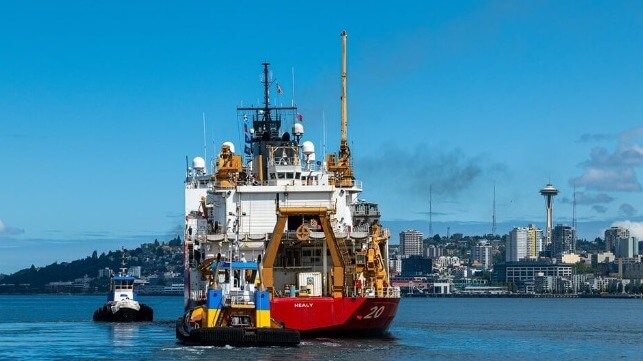Vice Commandant: US Coast Guard's Funding Shortage is Hitting Readiness

The Coast Guard's limited budget and its manning shortfalls are having an effect on capacity, the service's second-in-command said in an interview at a Washington think tank on Wednesday.
In an event at the Brookings Institution, Vice Commandant Adm. Kevin Lunday told attendees that the service is feeling the pinch from a 3,000-person enlisted servicemember shortage, the product of COVID-era challenges and years-long difficulties with recruitment. "We had to lay up three of our major cutters because we don't have enough enlisted personnel to crew them," Lunday said.
Budget limitations are adding to operational difficulties, he said. The Coast Guard's annual budget is $12.3 billion, less than the cost of one Ford-class carrier. $1.6 billion of that is available for capital investments - like shipbuilding, or shoreside construction and renovation.
"We need a $3 billion [procurement and capital investment] budget just to be able to maintain track with our current acquisitions," he said.
Aging platforms and funding shortages also combine to reduce readiness. "We're struggling to sustain the readiness of our current fleet of ships, of boats, of aircraft and of shore infrastructure," Lunday said. "If you want to get underway on a major Coast Guard cutter today, you have to do what we call a controlled parts exchange with other ships at the pier. That's a fancy term for cannibalization. We'll steal parts or borrow actually from the other ships just to get another ship underway."
He cautioned that this practice - while cost-efficient in the short term - has negative long-term effects for the fleet. "You can do that for short amounts of time but when you do it over a number of years, you're eating your own readiness, and that's what we're seeing."
Just last month, he said, the icebreaker USCGC Healy had a previously undisclosed electrical fire in an engineering space, forcing her to end an Arctic science mission early and return from the Northwest Passage to Seattle for repairs. She is currently under way southbound in the Gulf of Alaska, according to AIS data provided by Pole Star Global.
"Much of the mission systems aboard [Healy] are antiquated, and for some there aren't even parts," Lunday said. "And that's a concern, because if Healy can't resume her patrol, the U.S. will have no surface presence in the Arctic this summer."
Maintenance challenges and obsolete parts are just as much an issue for the 48-year-old USCGC Polar Star, the service's only other icebreaker. "I think the Navy would operate it as a museum," he said. "It's capable, but it's old."
Lunday emphasized that to perform high-latitude missions, the Coast Guard needs at least 8-9 icebreakers, including three heavy icebreakers. The heavy icebreaker program - the Polar Security Cutter - was contracted to Bollinger, and the first hull should enter the long-delayed construction phase in December, he said. In the meantime, the service has the funding to buy Edison Chouest's Aiviq, the only commercially-available U.S.-flag icebreaker - and that process is under way.
No comments:
Post a Comment